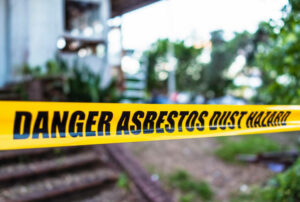The Health and Safety Executive (HSE) is emphasising the need to control asbestos and protect workers’ health during Lung Cancer Awareness Month this November.
 Britain’s health and safety watchdog highlighted the fact that 12,000 people still die from work-related lung diseases, including lung cancer, each year.
Britain’s health and safety watchdog highlighted the fact that 12,000 people still die from work-related lung diseases, including lung cancer, each year.
These deaths are linked to exposure to hazardous substances in the workplace and include an estimated 5,000 deaths related to past exposure to asbestos.
To help raise awareness of how we can all work together to protect workers’ health, the HSE is running two campaigns to highlight the risks of asbestos exposure and ensure workers and employers have the knowledge they need to maintain safety.
These campaigns, each offering free resources, information and guidance, are:
- Asbestos – Your Duty – this Work Right campaign aims to support dutyholders to understand the legal duty to safely manage the deadly substance in buildings that people use in their daily lives, including schools, workplaces, hospitals and places of worship. The campaign website includes guidance and templates
- Asbestos and You – this campaign aims to support tradespeople to understand the risk and provides a free quick guide for tradespeople to download
The HSE wants anyone with responsibilities for buildings to ensure they are complying with the law and preventing exposure to the deadly substance.
Exposure to asbestos linked to deadly cancers
 Exposure to asbestos during working activities can cause people to go on to develop lung cancer or malignant mesothelioma, which is a type of cancer that occurs in the thin lining that covers the outer surface of our internal organs (mesothelium). It mainly affects the lungs (pleural mesothelioma) and is described as an aggressive and deadly form of cancer.
Exposure to asbestos during working activities can cause people to go on to develop lung cancer or malignant mesothelioma, which is a type of cancer that occurs in the thin lining that covers the outer surface of our internal organs (mesothelium). It mainly affects the lungs (pleural mesothelioma) and is described as an aggressive and deadly form of cancer.
Mesothelioma typically develops more than 20 years after a person is exposed to asbestos. Because of this, it is commonly diagnosed in people aged 75 and over, and men are more affected than women.
Although the use of asbestos in buildings in the UK was completely banned in 1999, it remains present in many homes and buildings today. It is not harmful if it is properly contained, but becomes very dangerous once it is disturbed or damaged.
Because of this, asbestos exposure remains the single greatest cause of work-related deaths in Great Britain.
HSE wants people to be able to identify asbestos and its locations
 This means that construction workers as well as building owners, landlords, employers and people responsible for building maintenance must be aware of where asbestos is likely to be found, in order to protect themselves and others from these deadly fibres.
This means that construction workers as well as building owners, landlords, employers and people responsible for building maintenance must be aware of where asbestos is likely to be found, in order to protect themselves and others from these deadly fibres.
The HSE has updated its image gallery to help people identify the harmful substance in typical locations and take the correct action to avoid or minimise exposure. The page outlines where each asbestos product type is typically found, what they look like and who can work on them.
The health and safety watchdog warns: “Work on any type of asbestos can be dangerous.”
The HSE website provides a range of useful resources to help protect workers’ health and keep the public safe. This includes diagrams showing where asbestos can occur in buildings, A3 posters for industrial and residential buildings and a full worker’s guide to asbestos safety.
They explain: “Asbestos can be present in any building that was built or refurbished before 2000 and can be hidden.”
Training to protect workers’ health and safety
 First Response Training (FRT) is a leading, national training provider.
First Response Training (FRT) is a leading, national training provider.
They deliver over 6,000 courses each year in the fields of health and safety, first aid, fire safety, food safety, mental health, health and social care and other special focus topics.
Their diverse portfolio includes training awards in Asbestos Awareness, Handling Hazardous Substances (COSHH) and Managing and Supervising Risk.
A trainer from FRT explains:
“Exposure to asbestos fibres can be extremely hazardous, with long lasting and devastating consequences, including the development of serious illnesses such as lung cancer and mesothelioma.
“It’s vitally important that all people with responsibilities for premises understand the dangers and are aware of the appropriate safety measures they must take to minimise the risks of exposure and protect themselves, their employees, colleagues, clients and members of the public from harm.”
For more information on the training that FRT can provide, please call them today on freephone 0800 310 2300 or send an e-mail to info@firstresponsetraining.com.
